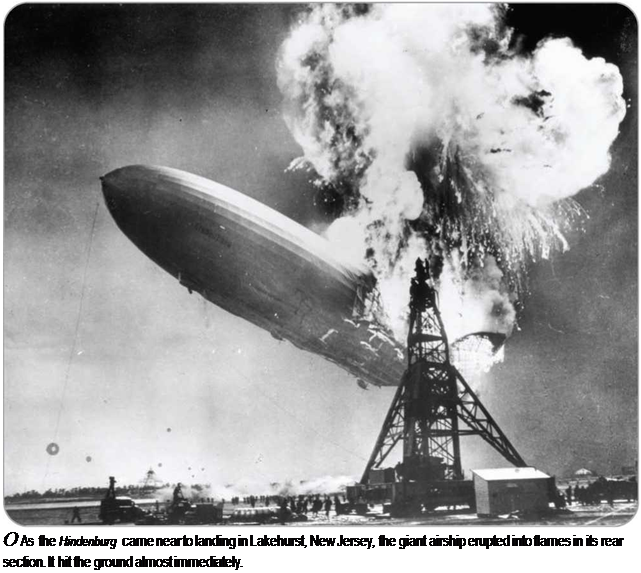The Crash
Just as the massive gray shape was close to its mooring mast, spectators were horrified to see flames erupt and spread rapidly through the fabric. Engulfed in flames, the giant airship crashed to the ground. In little more than 30 seconds, the greatest airship the world had ever seen had become nothing more than a red – hot mass of twisted metal.
It was amazing that anyone could survive such an inferno, but most of the crew and passengers did. Thirty-five of the ninety-seven people on board were killed: thirteen of the thirty-six passengers and twenty-two of the sixty-one crew members. Many died when they leapt from the airship. Those who stayed onboard as it crumpled to the ground were mostly able to scramble clear.
The horror of the Hindenburg’s end was broadcast on live radio, and this report, together with the press photographs of the burning airship, had a worldwide impact.
 |
How the Hindenburg fire started is not clear. Possible causes include a spark or a lightning strike, although the paint on the skin also has been blamed. There have even been allegations of sabotage. Whatever the cause, the consequence of the accident is undisputed. The loss of the Hindenburg meant the end of the air-
ship era. Other airship disasters, such as the loss of the USS Akron in 1933, already had shaken the public’s faith in airships. The Hindenburg tragedy was the final blow that effectively put an end to the historic age of the great passenger-carrying airships.
——————————————————————–
SEE ALSO:
• Airship • Engine • Materials and
Structures • World War I
______________________________________________ J










